The music fan possesses limited resources to achieve the goal of an enjoyable listening experience: time, money and energy. Reviewers tend to write about how cool everything is, but they should be writing about how mediocre most albums are so they can focus on the few that can be enjoyed for the next few years at least. It is hard to be cruel, but it is kinder than kindness. With that I introduce our latest round of Sadistic Metal Reviews…
Villainy – Villainy I
This enjoyable little romp reminds the death metal listener of later Sentenced crossed with the Venom-worship of Nifelheim and other bands who, in the old school days, were simply referred to as Venom tributes. Heavy metal genre riffing, combining the best tropes of the late 1970s and early 1980s, meets a harsh Cronos-styled vocal and updated technique. Nothing sloppy here; the band are tight and the arrangements show no spurious detail. However, despite the somewhat harsh vocals, like Venom this is NWOBHM and 1970s heavy metal revivalism without any particular relevance beyond that era. It skips speed metal textures for a death/black metal styled fast strum and continuous drumming as if taking notes from Merciless, and injects melody, but mostly stays within verse-chorus with introductory and transitional riffs different. The riff forms will be familiar to fans of heavy metal from that era. Lead guitar strikes a pentatonic blitz that is both enjoyable and very much within form. Unlike Merciless however this album focuses on writing hard rocking tunes and does not develop an evolving mood or atmosphere beneath.
Tenebrous – Arias Toward the Black Sun
Underground metal needs a new trope for a certain type of composition which appears frequently among our ranks. I dub this “80s situational comedy” after the movies where a character makes a bad decision, then to hide it chooses another bad option, then deceives and conceals in a string of events leading to absurdity and eventual plot collapse. Sitcom metal occurs when a band finds a riff they like and write other riffs to fit that riff without having an awareness of what the riff communicates emotionally to the listener, thus what the song is actually about, and so you end up with a cool riff and reactions to that riff which are designed to put it into context but ultimately have the opposite effect. Tenebrous fits this pattern through its work in a style that combines a whole lot of Graveland with some of the more aggressive strains of black metal. They have mastered the basic flowing riff, but not building a song around it, only building a song commenting on it. This is underscored by the cover of “Unpunished Herd” which ends the album and makes the rest of it look incoherent in contrast.
Pagan Flames – Symbol de Vie et Lumiere
This atmospheric black metal band combines Burzum-styled lead folk melodies over sweeping guitar riffs. Its strength is its melodic composition; its weaknesses are its vocals, which focus on rhythms that are too obvious and thus trite, and its tendency to try to work slamming full-stop and bounce rhythms into what should be a more continuous architecture. Barring those two disadvantages, Symbol de Vie et Lumiere presents black metal that unlike most recent efforts tries for the ancient, melancholic and epic warlike sound that made this genre popular before idiots invaded with thinly-disguised rock music to keep the mouth-breathers occupied. Many of these songs verge on being folk music itself and like the Darkthrone sidepoject Storm, feature trudging rhythms over which pagan lyrics are chanted to volkisch-reminiscent melodies. The fractured aesthetic presented by the overly busy vocals and tendency toward self-interruption with choppier rhythms narrowly keeps this album from being top tier but it distinguishes itself on its essence — attempting to write actual music through melody — from the formless legions of tryhards, shoegazers and hard rockers trying to use black metal as a vehicle for their own failed prior attempts at other genres.
Skrømt – Sjelebrann
Not since Disharmonic Orchestra Not to be Undimensional Conscious has a hybrid of this variety yet which retained its ability to express itself been cast among the metal minions. Skrømt combine alternative metal, post-metal, rough punk and older black metal influences (Ancient, Enslaved) into a form which keeps the catchy songwriting of indie rock bands but fleshes it out with a rich backdrop of shifting harmonic texture and, like metal, combines multiple riffs into chains to create a moveable part of a narrative. For the most part, songs stick to verse-chorus as augmented by background material and sometimes with a second instrumental chorus to expand upon the first loop. Like alternative metal, songs guide themselves through the vocals and the presentation of lyrics in a combination of shouted, sung and harsh vocals. Where this goes wrong is that rock and metal do not mix on an aesthetic and thus artistic level, and so the end result is rock gilded with metal riffs which are quickly absorbed, and some of the best work of this album exists in the shadow of the alternative rock tropes that it stands far superior to. This is unfortunate as clearly many good ideas and musical insights went into this album. Most inspiring in this release is the technical work applied to making the various riffs and styles fit together. It is rare for a band to understand how to connect different emotions together without following a blatant formula, but Skrømt stitches together multiple moods and styles into a coherent whole on a musical level, even if making it work on an aesthetic level seems difficult.
Church of the Dead – Vol. 4 – Meet Me in the Tomb
The term “cultural appropriation” seems trendy these days but few realize what it means. Blatant theft of the cultural methods of another group is too easily detected, so people appropriate those cultural methods by translating them into a form that most will not recognize. In this case, while Church of the Dead clearly uses death metal riffs and death metal vocals, its vocal rhythms are influenced by rap and its riff rhythms are closer to Motown than standard issue death metal. Thus while this disc shows some musical promise, it remains a confused aberration that wants to be in one genre but keeps itself in another, losing the spirit and atmosphere of that genre. Each piece tends to feature both Cannibal Corpse style trope cadence rhythm vocals and sing-song jingle-style vocals, making these hard to listen to without a wincing cringe, but also internalizes groove to the point where riffs take a basis in Morbid Angel and Malevolent Creation and become closer to Pantera. As a result, despite the many positives for this album, the overall negative is that its overall presentation is bouncy, poppy, and very much “rock” and not metal in form.
Deep Wound – Deep Wound EP
At some level all hardcore punk approximates the same thing because the genre solidified certain tropes and combined with the mathematical limitations on complexity, these defined the variety of punk songs. Deep Wound creates songs that sound either like Black Flag without the dissonance, or early Corrosion of Conformity without so many pauses. The vocals strikes a jaunty and sarcastic pause when they are not in full blur mode. As far as thrash goes, this is closer to the punk side like the first DRI LP, and its riffs are less metal than hardcore in minor key, but it beats the recent “crossover thrash” rebranding that verges too much on speed metal territory and becomes either tame or inanely jingle-y as a result. The hardcore spirit lives faithfully in this music but because of the vast similarity of hardcore, it also does not stand out in any particular way — riffs are not radically different, nor song forms, nor even vocals — so qualifies as a fun listen but not as definitive as the albums from DRI, Cryptic Slaughter and COC that defined thrash as a genre. However, this stands head and shoulders above the “party thrash” of recent years and by coming at the genre from the hardcore side, brings in an energetic simplicity that metal riffs make too complex to self-sustain.
###
Nidsang – Into the World of Dissolving Flames
- Basic black metal combined with Angelcorpse-style aggression, but leaning on the latter for songwriting. As a result, not much atmosphere but plentiful aggression. Melodic riffing adds some depth but consistent song form and intensity rob this album of much enduring power.
Aborted – The Necrotic Manifesto
- Aborted took their high-intensity low-complexity grind and gave it the modern metal (a/k/a deathcore) treatment which made it more chaotic. The more elements you add, the more internal complexity (melody, structure, theme) you must have or you reduce your core complexity to nothing, which is what happens here. Catchy chorus + two grinding riffs + hard rock influences.
Abysmal Dawn – Obsolescence
- Workable death metal with heavy metal influences in abundant lead soloing, melodic riffing and catchy choruses. Very paint-by-numbers however with not much of an intent to put anything into a song but energy and internal cohesion. Good riffs give it strength but do not make it compelling; modern-metal-style chanted choruses ahead of the riff also increase frustration.
Cemetery Fog – Towards the Gates
- This attempt at Paradise Lost-styled doom metal is both well-composed and artistically relevant, but highly cheesy from the use of melodies that directly gratify pop instincts to the occasional female vocals which aesthetically create the type of cheese that Motley Crue could only dream of. Songs are well-written and express a unique form and content for each, even though they drone on through a series of heavy metal riffs slowed down and are united by a melodic lead shadowed by vocals. While not bad, this makes the album as a whole somewhat sentimental in the sort of obvious Thomas Kinkade calendar way that drives away people like me, but it would be remiss to not notice the quality of songwriting here.
Abigor – Leytmotif Lucifer
- Black metal needs to stay black metal. Abigor try to work in late Gorgoroth through early Deathspell Omega influences and it makes their already spotty music more spotty. Some good melodies, no continuity, too much style.
Aevangelist – Writhes in the Murk
- Imagine Teitanblood with melodic riffing and slowed down to fast mid-paced death metal. The one cool effect here is the use of abrupt transitions to create a theatrical effect, but the lack of underlying riff and song consistency makes even this seem hollow.
Bethlehem – Hexakosioihexekontahexaphobia
- Most will notice the creeping Rammstein influence: clean vocals, more dance-able beats, more pronounced use of German lyrics. However, a good deal of this sounds like recent Absurd as well with more of a folk influence creeping in and while the rhythms are more popular music friendly, they are far from industrial, and what appears instead more resembles NWOBHM with more groove than the quasi-modernist sound of Rammstein. Otherwise, the riff wizardry remains but is muted, with more emphasis on vocals and repetitive choruses, but generally these songs fit together well musically and develop an internal melodic sense that produces a multifacted atmosphere.
Agatus – Dawn of Martyrdom (re-issue)
- Sort of like a cross between Legion of Doom and old Rotting Christ, Agatus uses the full punk style of even strumming speed creating droning riffs. These are pleasurable in themselves, and fit together well in songs, but they are both too obvious as melodies/phrases and too similar as rhythm riffs to make this work. In addition, many of the melodic choices here are simply rudimentary crossing into bad. This could have been an epic album if a more critical eye had been applied during composition.
Acheron – Kultes des Hasses
- The challenge to Acheron has always been to overcome their cadenced rhythm that comes to a full stop in perfect symmetry, sounding a bit like a child’s song. On this latest album they work up the usual assortment of great riffs in bad rhythm and occasional disorganized order.
Baphometh – In the Beginning
- Essentially speed metal with plenty of repetition, catchy choruses and circular song structure, this band nonetheless adopts death metal vocals. However, it is better for fans of B-rated Metallica and Exodus clones than anything newer. While none of this is incompetent, songs have no center around any kind of conflict, so the general mode is repetition and circularity.
Authorize – The Source of Dominion
- Thudding, predictable, circular and confused, Authorize are Swedish death metal in the style of Suffer but with none of what holds songs together or makes them anything but basic guitar practice. Lead guitars totally incongruous, other elements equally out of place. Should have stayed unreleased.
Aurora Borealis – Worldshaper
- The melodic death metal band works Absu-style jaunty vocals into the mix, but they take over composition too much. Riffs follow the vocal lead which dominants rhythm and creates a kind of circus atmosphere with the MC describing each act and then the trained bears of the riffs, clowns of the background vocals and highwire dancers of guitars take over. Sounds a lot like Warfather but more melody.
Tags: Abigor, aborted, abysmal dawn, acheron, aevangelist, agatus, aurora borealis, authorize, baphometh, bethlehem, Black Metal, cemetery fog, church of the dead, death metal, deathcore, deep wound, nidsang, pagan flames, sadistic metal reviews, skromt, tenebrous, villainy

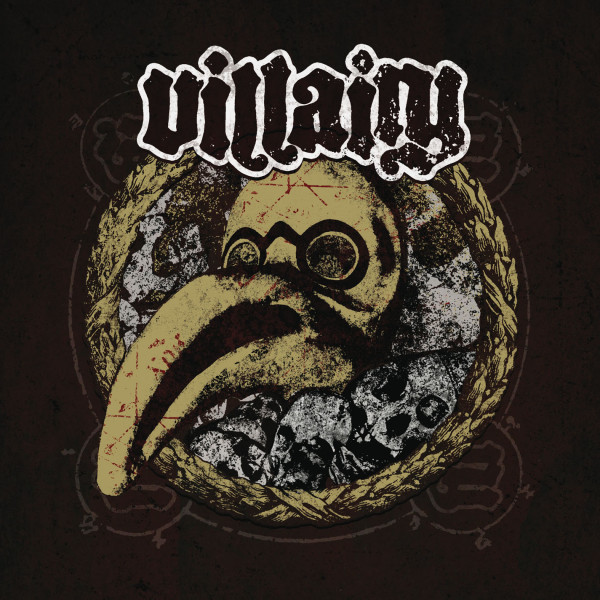
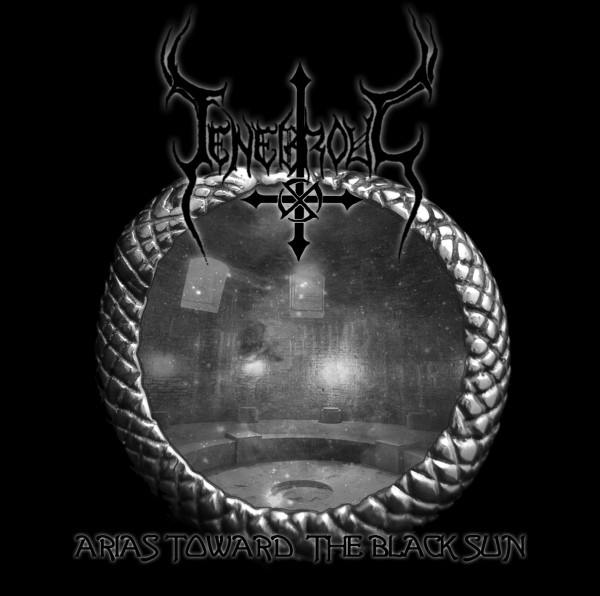
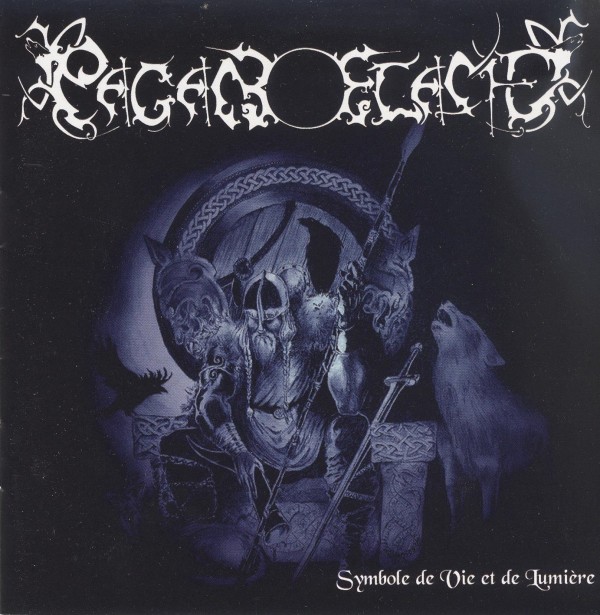

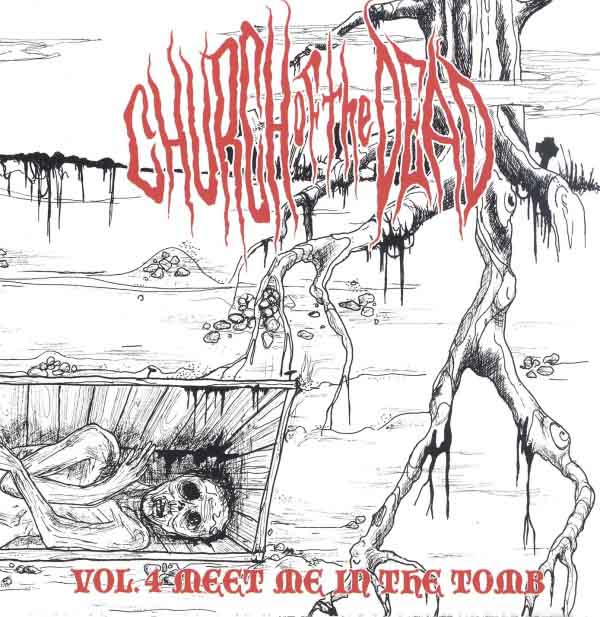
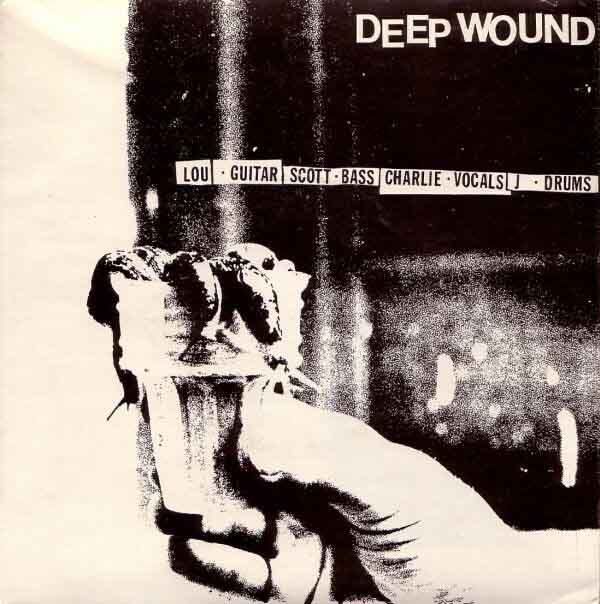


> “is that rock and metal do not mix on an aesthetic and thus artistic level”
What do you mean metal and rock don’t mix? Most 80s metal is a mixture of heavy metal and hard rock. Most heavy metal is a mixture of Black Sabbath and Zeppellin’s hard rock styles.
Furthermore, most heavy metal, power metal and even early thrash metal has a lot of rock into them! I’m not saying this to contradict you but I’m not sure how do you reach that conclusión. I’m just curious.
I think this is a common misconception. Metal comes, in a way, from Rock, but it is not Rock music. Take a look at Black Sabbath, the prototype of the Heavy Metal band, and how it differs from the likes of Led Zeppelin or most who came before.
You will notice that most of the traits they share are superficial: strident noises, vocal style, and instrumentation.
The way songs are built, namely form (people hate and misunderstand this word and think it is some kind of strict template, those people need to study and think a bit more), is where Metal and Rock differ.
Why do they differ? because intent, the feeling that wants to be projected is different.
Most MAINSTREAM 80s Metal is *NOT* a mixture of heavy metal and hard rock. Besides “Thrash” Metal (Speed Metal is the correct term) came out a little before if not roughly at the same time as what we know as proper Hard Rock from the 80s, and the former bands always despised the latter. Hard Rockers such as Glam Metal bands were always a different beast.
Where’s the Hard Rock in ANY Slayer album? You won’t find it. Their debut is, in any case, heavily influenced by Judas Priest, and still bears the original mark of Slayer.
First album Metallica, where’s the Hard Rock? You mean because some guitar strumming patterns are similar? that’s like saying that Soundtrack music for Star Wars is Classical because the instrumentation and the way the instruments are used is similar, including some details.
There is a certain kinship which is more clear in some bands than others. But that is merely superficial. The so-called Metal bands that definitely sound like they are playing Hard Rock are most probably just doing that: playing Hard Rock, not Metal. A good example is half of Testament’s Music or the funny Exodus.
PS. EARLY Black Sabbath, that means albums 1~4 has NOTHING to do with Hard Rock .Please listen to them again.
Most MAINSTREAM 80s Metal is *NOT* a mixture of heavy metal and hard rock
Sorry to bust in but, I can agree with you that underground metal is a different beast but say, above ground metal and that includes most heavy metal and speed metal or thrash metal as most know the term, still has traits of rock n roll.
I can agree that intent was different because such antagonist impetus to stray away from rock n roll can be traced back to the late 60s early 70s with prog rock and kosmische muzik. Musicians looked elsewhere for inspiration and they landed on classical music and mythology.
The author of this post says rock and metal do not mix. In a sense metal, prog, electronic and ambient music grew away from rock to a certain extent but they never really left it, save for afew exceptions. That means that rock and metal for the most part have coexisted since day one.
Many black and death metal albums praised on the DLA bear rock elements as described and emphasized by the reviewer.
They have coexisted, but the best bands have left it behind.
There are those who still have it, as someone else said it, in their DNA, as traces as of Metal’s origin, but not in a mixture as you put it.
Tell me what bands in the DLA have strong rock influences and we can discuss how these are neglegible and why it is a different thing from what is criticized here.
Vader Bathory Suffocation Ildjarn Celtic Frost Slayer
Again, they’re not playing rock.
This is the problem, you guys keep looking at the surface.
You can also place VIOLINS or instrumental sections akin to the sound of classical music or even SALSA if you like, though it’s more difficult.
At the very core, they don’t gel. I know for most people the distinction is difficult to make. What is the surface, what is the underlying structure and goal.
Structure should be the barebones melodies themselves, and surface is everything else.
Melodies are just melodies. Structure is the way in which melodies (as distinct quanta [or, usually, “riffs”]) are associated.
You have no idea what I’m looking at because I haven’t stated it. You are you presuming your position is true and therefore everyone who doesn’t agree is just “not seeing it” or shallow minded. Nevermind the fact that you asked which DLA bands had a rock influence, I answered your question.
Rock bands experimented with structure just metal bands did. Likewise, many incarnations of rock music have sought out different artistic goals. Metal seeks a darker path than that explored by the rest of the rock lexicon. Is that enough to say it is something different entirely? Even at the maligned surface level, you have the same core instruments with a voice literally yelling over the music, not exactly a far cry from the negro days of rock only the subject matter is quite a bit different. At the hallowed depths of metal composition – in some cases, not all – lies what? Phrasal composition? More riffs per song?
thank you.
Metal and rock obviously do not mix well artistically. I’d say that rock music has no artistic goals nor a need for them. Assimilation is what occurs when metal loses its artistic intent and direction. That said, musically, Black Sabbath, Iron Maiden, Judas Priest, Metallica and even Bathory have traces of rock’n roll in their DNA (riffs, harmony, rhythm, structure) and just think of all the bands that have been influenced by these acts. Even Slayer (Crionics) has traces of rock. When metal stops using two electric guitars, bass and a drum kit and goes ambient with the melodies of old black metal we’ll be able to say that metal has left rock’n’roll behind.
Rock is blues based and Sabbath 1-4 is full of pentatonics.
Like I said, superficial relations.
The scale used is the same, it doesn’t imply much about structure and composition focus.
Same as Star Wars Soundtrack to Classical Music. Please read carefully and consider before answering any half-thoughts.
Why is it a half thought? Because it disagrees with you?
I like Sabbath, but they were blues based. And that is not a superficial relation- if you take the score of the songs they use blues principles. You guys all act like you understand the composition of songs as if you were in the room when the composer wrote them. Take away the lyrical themes and speed of the band and it’s just heavier blues based rock. Rock and metal are tied together, as much as you don’t want to admit it. As far as composition, they were still in traditional rock arrangements. “Black Sabbath” exists around a tritone which is the most metal thing about the song, but it’s still verse-chorus-verse-chorus.
Please refrain from making declarative statements based in falsehoods and fashioning arguments around your claim (DMU.org 101). I’m sure if Tony Iommi himself sat down with you he would tell you his music is rooted in the blues.
If we apply this standard, rock and blues are just simpler German middle ages ballads.
What was stated is that the composition of the song is a superficial element and not derived from the blues, which I think is silly because if you look at the score it falls back on blues principles. The superficial aspects of Sabbath are in my opinion the lyrical context and such. Combining the aspects gives you metal sure, but saying the two genres are divorced from each other is a silly means of elitism that is completely delusional. The defense of the genre here often clouds the argument, and I know that people here staunchly want to feel that metal is theirs and cannot be part of a mainstream ideology, but the denying the progression from a musician’s standpoint doesn’t make sense. Sabbath were innovators in taking known formulas to a different extreme back then but the skeletons of their composition were blues based.
I’m not following; how is this related to elitism?
Blues principles don’t even belong to the blues, so what “looks like” blues may be a number of different things.
The predominant difference with Sabbath — in my view — is their use of long-phrase riffing. That was the game changer. Everything else was done before.
Blues, as pointed out above, is a bullshit marketing category. It is lifted from medieval German ballad form with two significant modifications: (1) use of the “blues scale” which removes key notes and (2) constant syncopated percussion.
Much like nu-metal, blues was a product of capitalism and nothing else.
As to how that’s related to elitism and/or Black Sabbath, that’s for someone else to elaborate.
It’s elitist in the sense that posters here don’t want to admit that something they love and defines them is derived from a contrived (by American rock standards) set of musical ideals. Long phrases may have been innovative but if built on “blues” scales they still create the same moods heard in commonplace American rock. If you want to trace back the blues principles to its German origins to give credentials to your argument I can’t stop you, but if you listen to Sabbath and convince yourself you’re not hearing American rock tenets, you’re doing so to give credence to an idea that what you love cannot possibly be influenced by mainstream principles just to divorce yourself from commonly appreciated musical themes. I come to this site to hear about underground releases that may be under my radar, but standpoints like this puzzle me. You are welcome to believe this, and I know that me arguing my perspective won’t be listened to, but I think refusing to acknowledge what I’m saying is more in defense of your own perspective of a non-inclusive musical genre that you feel defines you than the compositions in question.
Well Ara, I feel like Brett is ignoring me on purpose. He only replies to your comments. Now that’s elitism!
I don’t mean to ignore anyone! Especially with such a uh… distinctive username.
The idea that the blues sound is based on the “blues scale” (minor pentatonic with an added flat 5th passing note) is a misconception that I see a lot. The main part of the blues sound is tonal ambiguity created by playing minor intervals over major chords. You could play a blues solo without once using a flat 5th, and with at least as many notes from the parallel major pentatonic as the minor, a la BB King or Eric Clapton. It’s the tension between major and minor intervals, especially playing a minor third over a major chord, that makes music sound “bluesy”.
That isn’t something that I hear in Sabbath’s early music apart from a couple of blues/jazz jams on the first album. They may use similar note choices in their riffs to blues music (they were clearly influenced by the British blues boom in the 60s) but the riffs are organised in sequence, rather than having a harmonic interaction with an underlying chord progression, and they work towards developing ideas over the course of a song, where the blues was much more cyclical.
Sabbath’s early music shares a common language with blues, rock, jazz and folk but, like prog rock, structures it differently in order to describe different things.
I find the comment about the song Black Sabbath having a verse-chorus structure a little confusing, too. The way I remember it is riff-verse-riff-verse-contrasting riff. There may be a couple more changes than that, but it seems quite far from rock conventions.
Very important and well articulated.
What you are ignoring, Ara, is that just in the same way that Metal CAN be traced back to Rock and Blues, that music can be traced back to something else and so on and so on. You are just arbitrarily choosing to stop at Blues. The one imposing an agenda over the analysis is you, not us.
Genres are defined by intent. Not MERELY STATED IN WORDS. But the way music is built. Not by the building blocks (such as scales and progressions, which is where your limit of understanding of theory seems to be) but by HOW those building blocks are arranged.
Not sure that makes logical sense. How is it elitist to point out that metal has sought to differentiate itself?
There are many things to hear in Sabbath. On Vol IV I hear mostly cocaine. I would have loved to have been there for the recording of that album!
“What was stated is that the composition of the song is a superficial element and not derived from the blues”
No, I did not state that the composition of a song is a superficial element. Stop twisting my words.
you said:
“Rock is blues based and Sabbath 1-4 is full of pentatonics.”
And I said this was superficial only.
Using pentatonics does not define composition. And you have something more specific to say, then explain it better. I am just taking your words.
Pentatonic scale is just one mode, that’s all. As I said once and again, the nature of a music piece is defined by much more than that.
I would recommend you some reading since you think you know so much but keep making the same mistakes again and again.
1). study some theory beyond simple chord progression memorization and scales
2) study some philosophy on music
3) read some music analysts like A.B. Marx which go into technical details while pointing out a greater scope in music beyond mere scales and into underlying structure and overall effect and intent.
I think this is important. Structure is how the different parts of the music relate to each other. Like free jazz or modernist classical, much of this is based on phrase/melody rather than harmony. Also as said elsewhere, blues is itself derivative of traditions discovered in many places and turned into a product by American industry. It makes no sense to point to it as a musical origin of anything especially since it is wholly written within Western musical theory. I don’t think that is an attempt to be “elitist” but to be “realist.” The language of industry is that idea that blues is the origin of everything in rock, where in reality, rock bears out multiple traditions confined by its structural approach to songwriting, which is nearly exclusively verse-chorus and harmonic, EXCEPT for progressive rock (including Jethro Tull) which is much more phrasal/melodic and structural. Also important to give props to Indian classical which discovered all this stuff a few thousand years before anyone codified it elsewhere.
Let me explain this again.
What do you think Classical music is based on. More specifically, the Classical Symphony? Where do you think it COMES from? It comes from Baroque Concerto Grossos who have their own origin in an even more different type of music. But each of these follows different principles and have different requirements. You would not mix them because it would be a joke.
The same is true about Blues, Rock and Metal. The same is true about distant ancestors in the evolutionary line.
“Why is it a half thought? Because it disagrees with you?”
It’s half-thought because you are not understanding that the use of a simple progression or the use of scale is not what defines the overall nature of music. It only is a color in a palette.
Scale is what defines mood. Mood is nature of music. Everything is skin of a skeleton.
If you view music as art, thus expression of ideas, blues is inherently personal music, while Sabbath at their best is as removed from the self as 70s music goes, probably.
Compare for example “Dazed and Confused” with “War Pigs”. Same time period, similar techniques, isn’t that where the similarities end? They ‘re only superficial.
Music is beyond pentatonic scales. Mind you if nowhere else in the void one would listen to music theory is related to entropic structures decimated by heat wave cavernous loops. Obviously!
Unless I have a cock in my mouth which doesn’t happen that often, I’d have to agree with ARA here.
Nope.
“For example, the blues scale is predominantly derived from the minor pentatonic scale, a very popular scale for improvisation in the realm of blues and rock alike.[23]”
http://en.wikipedia.org/wiki/Pentatonic_scale
So? Do you know when the major scale was first used?
We don’t know, but you can go back 800 years and find music using it. And you find popular music today using it. Does it mean that it is the same music or that any two musics using the major scale are akin?
Why does the origin of the scale or mode matter? Are you saying Iommi utilizes pentatonics because he is influenced by the first use of them? And are you saying that because you don’t want his influences to be blues based to give more yield to your argument that metal is not rooted in rock or blues?
Because this is selective reasoning and silly. If Iommi sat down and told you he was influenced by blues players, would you concede or point out their lineage to further your point?
Origin does not matter in this argument. People hear things and get influenced by them and create with their own spin on it. Iommi most likely didn’t hear blues musicians and research German middle ages ballads in order to build his riffs. This argument is asinine. If someone makes a horror movie today that is rooted in jump scares and other superficialities you don’t say it’s roots are in Nosferatu in order to give it leverage when it most likely is just jumping on whatever came out in the last 20 years.
I get it, you like Sabbath and want to elevate them to a standard unapproachable by common people. But to point out a different set of influences to create a history that is theory at best is silly.
This whole argument is over this statement:
“PS. EARLY Black Sabbath, that means albums 1~4 has NOTHING to do with Hard Rock .Please listen to them again.”
Nothing is a strong term. I will concede that I lack knowledge of musical lineage if you’ll acknowledge that this statement can’t possibly be true. One of the fundamental issues in this argument is implying that the creators in the genres involved have education enough to acknowledge differences between rock/blues/classical/whatever. Saying modes and scales don’t make a difference because the composition is not akin to predetermined genres is a silly benchmark because it implies Sabbath was aware of them and deliberately turned their backs when more then likely they were just kids jamming, and stumbled onto something great by cosmic accident.
Sad to read that unfavorable review of Authorize. One would think that death metal from 1991 would always be at least good.
That is a bummer.
Please do a review of this old school death metal band:
Anybody here care to share their opinion of this band?
Sargatanas (Mex) – Knights of the Southern Cross
https://www.youtube.com/watch?v=AFxfb1qsUNU
Bethlehem is so far removed from the underground spirit now that they should just make a goth rock album (like Fields Of The Nephilim).